Why Digital Transformation is
Important in a Post-Pandemic
Global Economy
The COVID-19 pandemic disrupted the way we all work and interact, revealing the need for original equipment manufacturers (OEMs) to accelerate their digital transformation journey from hardware to everything-as-a-service (XaaS) and develop supply chain and management structures positioned for the future. In this complete guide to digital transformation in a post-pandemic global economy, discover the key steps in developing a digital transformation strategy for integrating technology, processes and people that transcends traditional roles.
The game has changed, which means it’s time to reimagine the possibilities of where your business could go and how to get there.
1The Case for Digital Transformation
Understanding how to navigate the disruptions, evolving demands and new norms created by the pandemic is key to success, even in a post-pandemic world. Ninety percent of executives surveyed said they accelerated the timing of their transformation efforts due to COVID-19.
2What is Digital Transformation?
Digital transformation is not only about technology — it requires examining processes and organizational structures to rethink how you do business. The goal is to deliver more value to stakeholders using technology that enables your team to focus on high-priority activities.
3Digital Transformation Roadmap
Don’t start your digital transformation journey without a map, especially as you prepare for a post-pandemic world. Use this step-by-step guide to transform your business through a phased approach that builds a strategy to overcome existing gaps.
Part 1: The Case for Digital Transformation
The COVID-19 pandemic has illuminated the opportunity for digital transformation to integrate the physical and digital worlds across the enterprise. Supply chain disruptions and delays, labor shortages, rolling lockdowns and a myriad of other obstacles will continue to challenge even the most disciplined operations, so knowing how to navigate them is key to success — even in a post-pandemic world.


We believe that supply chains will remain global and complex, but there will be renewed thinking in companies to recognize Black Swan events such as the Covid-19 pandemic can create a multitude of interrelated and cascading supply chain issues that have serious financial implications. And companies will need to blend flexibility, adaptability and efficiency to develop capabilities to mitigate impacts and remain resilient during such supply chain disruptions."
Source: Georgia Tech College of Business
As companies learned to cope in the beginning of the pandemic, it became clear that the status quo was no longer acceptable. They needed to adapt — and fast — in order to keep up with the fluctuating market and evolving customer demands. According to a recent survey, digital transformation has taken on increased importance for 95% of executives, and 90% said they accelerated the timing of their efforts due to COVID-19. But digital business transformation will vary for different types of organizations, as there isn’t a one-size-fits-all solution. Ultimately, it’s about changing the culture to approach the business and the challenges it faces in new ways.
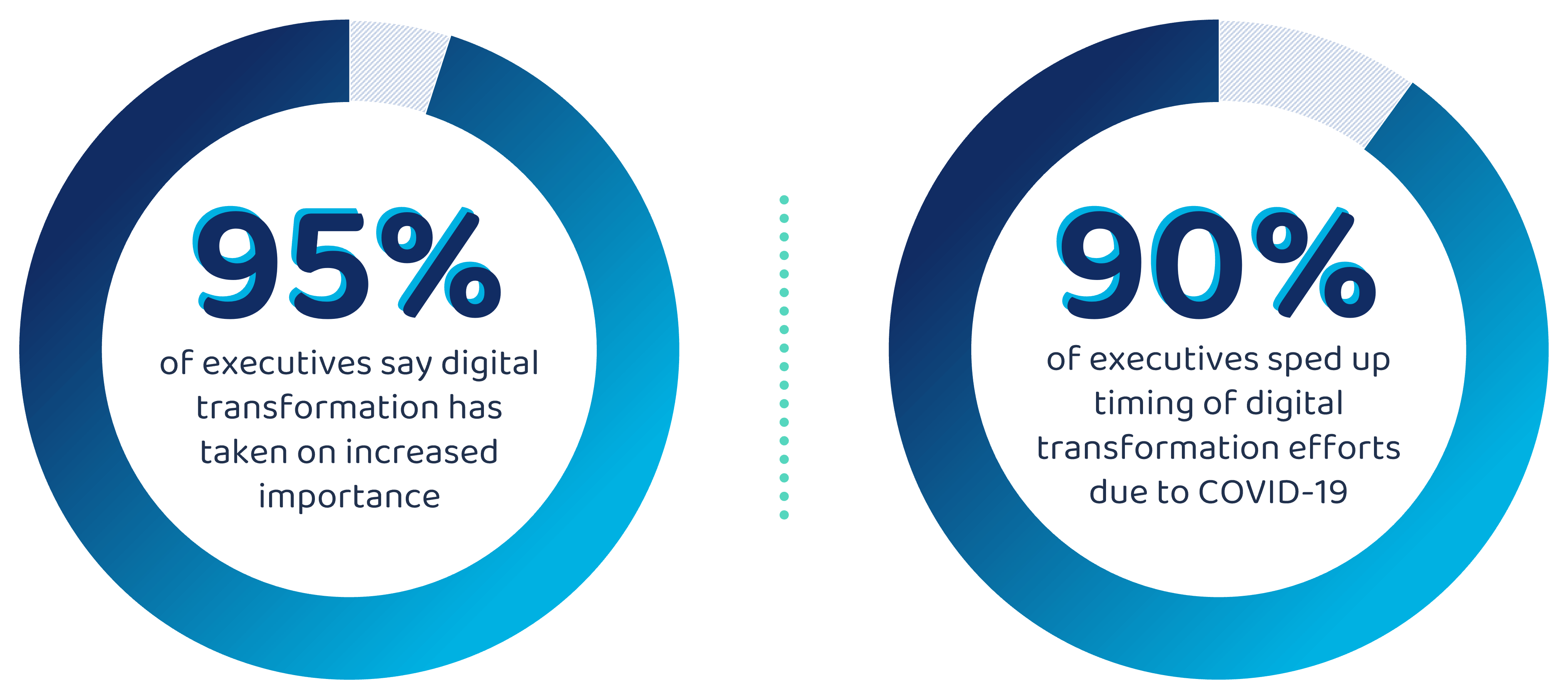
To survive the pandemic, many companies underwent a cultural shift in how they operate and deliver value to customers. For some companies, business transformation may mean outsourcing what were once seen as mission-critical tasks, such as customer fulfillment and support. New technologies can automate many repetitive tasks and derive data-driven insights that shape the company’s strategies and business plans.
One key initiative in digital business transformation is building a sustainable, fault-tolerant supply chain. Cutting down on waste and diminishing the carbon footprint of your operations not only reduces your environmental impact but can also free up funds for other endeavors and improve your brand’s status among the public and key stakeholders.
A fault-tolerant supply chain is able to respond with more agility and flexibility to short-term disruptions as well as systemic shifts in the supplier base and customer demands. But a supply chain that’s stretched too thin or simply isn’t far-reaching enough to begin with can lose the ability to snap back when the dust starts to settle.
Prioritizing digital transformation and following through with an effective strategy positions your organization for the supply chain of the future, with the flexibility to navigate the challenges yet to come.
Part 2: What is Digital Transformation?
While the concept of digital transformation may vary depending on the organization, the goal is to integrate digital and physical processes to deliver a better customer experience and higher performance. Technology enables disruptive (yet productive) change in your company’s go-to-market strategy by automating repetitive processes, supporting data-driven decision-making and creating a resilient supply chain.
Experts have identified four main types of digital transformation that focus on delivering value in a post-pandemic economy, and companies may incorporate all or some of these types in their journey.




PROCESS
BUSINESS MODEL
DOMAIN
CULTURAL
Integrate and digitize disparate internal processes through machine learning, cloud applications and more.
Shift from a sales model to an XaaS model — whether “X” means applications, hardware or something else.
Enter new markets to serve a new customer base or expand offerings into the digital space.
Redefine mindsets and shift the focus from production/ manufacturing output to customer service and innovation.
Experts predict that every enterprise will eventually become a “digital innovation factory” that creates and embeds technology into its own products for enhanced value and services.
For companies that relied primarily on physical interaction with customers, pandemic rules changed the operational picture. As they injected technology into previously manual processes, these enterprises discovered increased efficiency and customer satisfaction through digital transactions.
In response to changing customer demands, many companies are shifting from a sell-it-and-forget-it approach to an ongoing service strategy that places more emphasis on nurturing the customer relationship and, in turn, nourishes the revenue stream.
For technology OEMs, customers are leaving behind the traditional IT purchasing and service contract model for a relationship based on capabilities and capacity. They want to buy computing power, not just computers, so many OEMs are shifting to flexible XaaS models that require a much higher level of customer support. Technology is a part of this shift, but the primary factor is a foundational transition in how the enterprise goes to market.
To compete in this new world and upgrade their go-to-market strategies, OEMs are partnering with outsourced service providers for integration, supply chain management, deployment, maintenance, repair, customer management and more to enable their own business transformation.
|
|
DID YOU KNOW?Fujitsu TMS is now Shyft Global ServicesTo accelerate its business transformation, Fujitsu America, Inc. partnered with Shyft Global Services as a single services provider for its Technical Maintenance Services (TMS), which includes its multi-vendor Retail Managed Services and Product Related Services. This outsourcing partnership enabled Fujitsu to focus more on its core offerings while still maintaining a consistent customer experience. The transition was seamless for existing TMS customers, who enjoyed the same points of contact, systems and tools, customer experience and level of service. At the same time, Fujitsu’s internal resources gained the freedom to work exclusively on digital transformation efforts in North America. |
Part 3: How to Create a Digital Transformation Roadmap
At many companies, executive team involvement is one of the key elements of success for digital transformation. One survey showed that 75% of executives said transformation was on the agenda of the CEO or executive committee leadership throughout the initiative’s lifecycle. The same number said transformations in recent years have been sponsored by business leadership rather than the CIO or CTO, as was typically the case prior to the pandemic.
While some things in the post-pandemic world may return to previous norms, many companies will build on what they’ve learned during the pandemic — and they should. Following a basic transformation roadmap can help you begin your digital business transformation journey equipped for a high degree of success. For starters, don’t try to tackle the entire organization at one time. Start with targeted functions or segments to create manageable programs to deliver early successes that generate ongoing enthusiasm and solid returns.
PART 3, CHAPTER 1
Key Pillars of Digital Transformation
The success of your digital transformation journey depends on three pillars of transformation: culture, processes and technology.
CULTURE
In a Harvard Business Review survey, 46% of respondents called out their company’s culture as the biggest obstacle to transformation. Lack of staff with skills in analytics and digital systems was the top barrier for 26%, followed by corporate inertia at 25% and resistance to change with 23%. In a post-pandemic environment, integrating activities on site with a remote workforce could hinder innovation that used to develop through informal conversations.
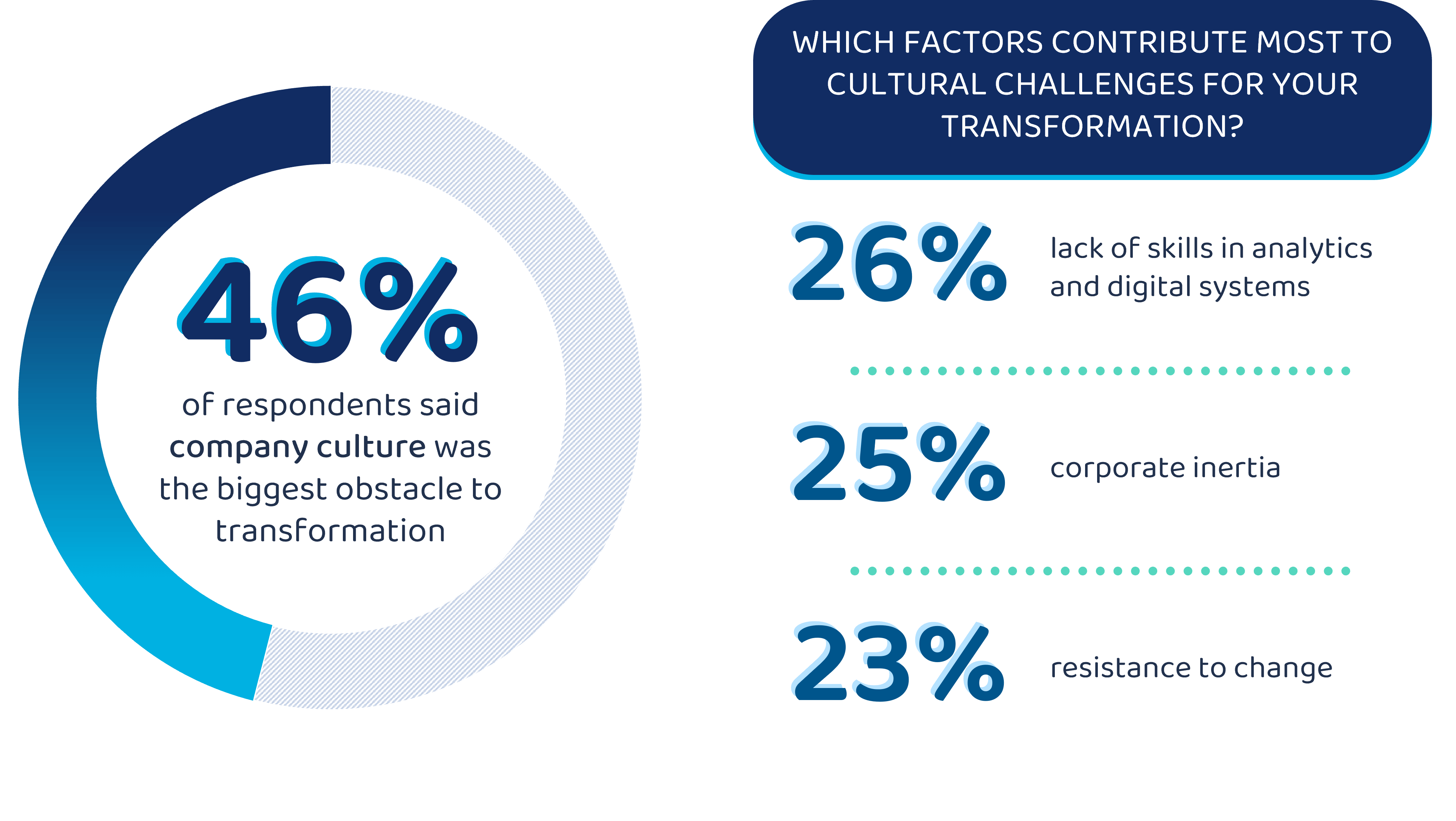
PROCESSES
Updating outdated internal workflows and processes to take advantage of technology may require a surprising number of resources to address complexity and cultural inertia. Changing “the way we’ve always done it” mentality can be a challenge — 48% of tech executives said complexity and resource demands for changing existing business processes was their biggest obstacle. Overall, problems with current processes hindered organizational modernization efforts for 38% of respondents.
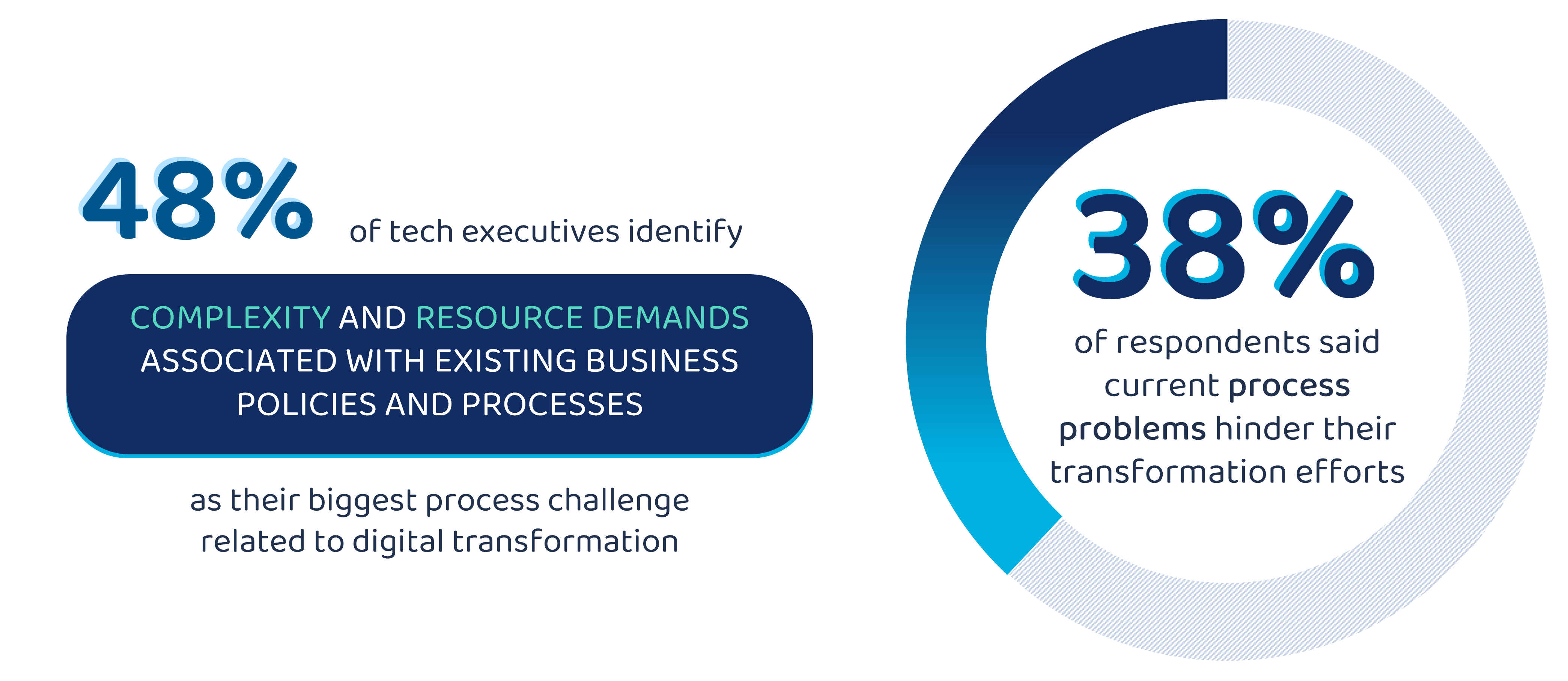
TECHNOLOGY
Technology impediments are also a reality in different ways. For 29% of executives, technology barriers were their biggest roadblock to modernization. For 31%, complexity of their current environment was their biggest roadblock, and 16% identified lack of analytics capabilities.
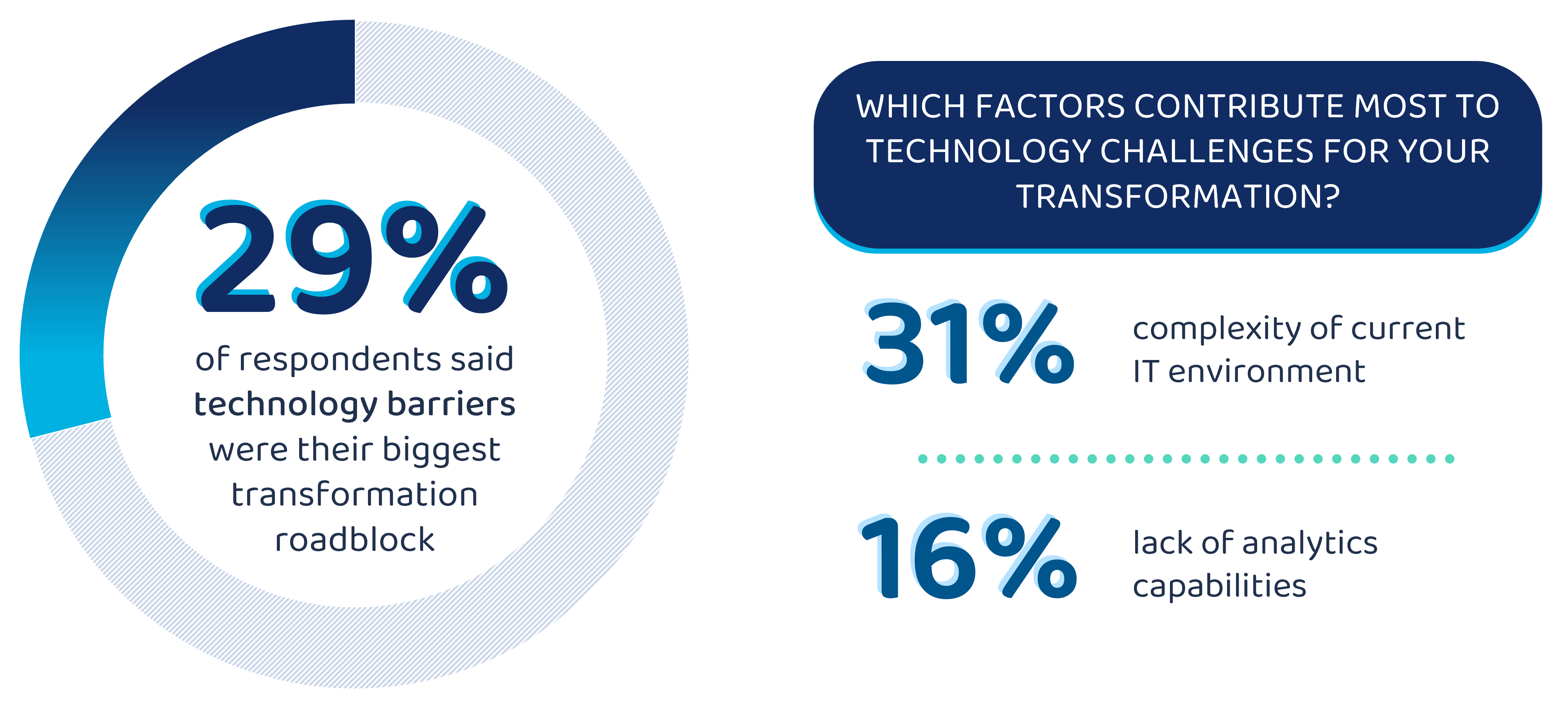
In addition to considering these three pillars as standalone obstacles, technology, process and culture barriers may coincide as companies grow through mergers and acquisitions without integrating their IT estates or considering different approaches and mindsets.
PART 3, CHAPTER 2
5 Steps to Create a Digital Transformation Roadmap
Following these five key steps, start your digital transformation journey with a strategy designed for the challenges and demands of the post-pandemic world.
1. Assess the Current State
Identify favorable internal and external factors. For a first project, look for areas with easily defined parameters and opportunities for visible results. Utilizing a SWOT analysis can help you better understand the current digital capabilities of your organization and identify hidden gaps — perhaps siloed systems aren’t as integrated as they could be.
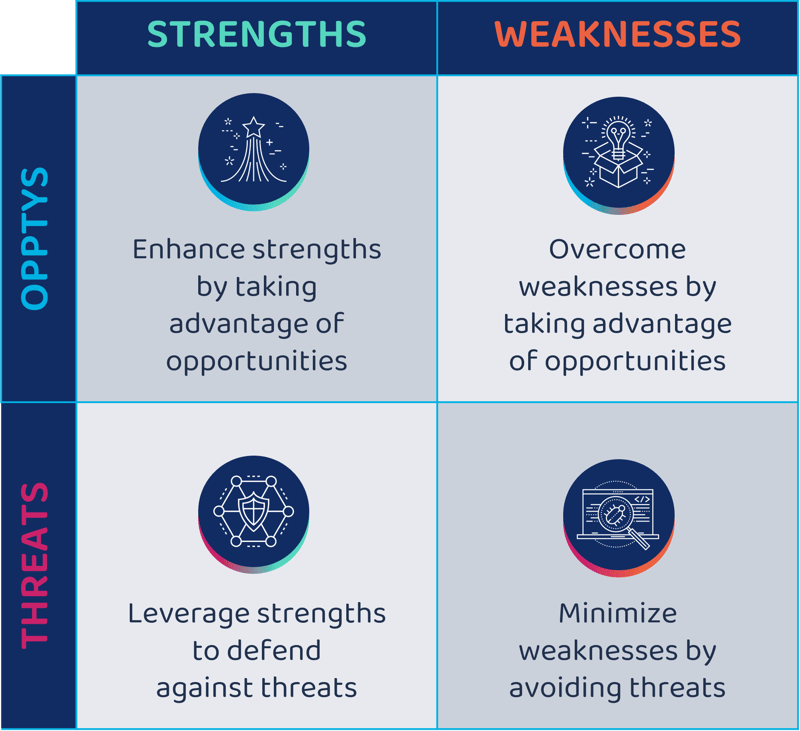
2. Set Goals and Create a Strategy
Set measurable goals and develop the processes to achieve them. Focus on addressing flaws and other pain points you identified in the assessment phase. Perhaps start by outsourcing field services for a particular product type or geography. Or look for ways to simplify and automate the customer experience using digital methods.

3. Start With Small Changes
Select pilot projects or less complex targets to address the fastest, easiest improvements to score early wins. Transformation efforts can lose momentum if they become bogged down in complex problems and internal issues. Early success with smaller changes generates additional buy-in and can help fund further investment.

4. Deploy a Phased Rollout
Execute your strategy in stages to test and implement the efforts to minimize disruption to the rest of the organization. Phases should build based on technology and process changes. Automating mundane tasks earlier on in the transformation journey can free up resources for implementing subsequent phases. Increasing digitization also improves visibility and decision-making based on improved data flow and analysis.

5. Flexibly Scale Processes and Recruit Talent
Use the new infrastructure and processes to scale the digital experience for your customers and employees. Given the expertise your team acquires early on during the journey, subsequent transformation projects may proceed at a faster pace with a proven foundation. And at the same time, as your organization grows, you must support both existing and newly hired employees with cohesive training programs that align to your digital transformation goals.


Discover the Benefits of an Outsourcing Partnership
Follow the Roadmap to Outsource Services
As companies continue to evolve after the pandemic, there is significant opportunity to streamline existing processes, allowing for deeper focus on implementing additional innovations. Digital transformation can help position organizations for success in the post-pandemic business environment. Outsourcing services supports cultural and procedural transformation and can simplify your organization’s overall digital transformation.








